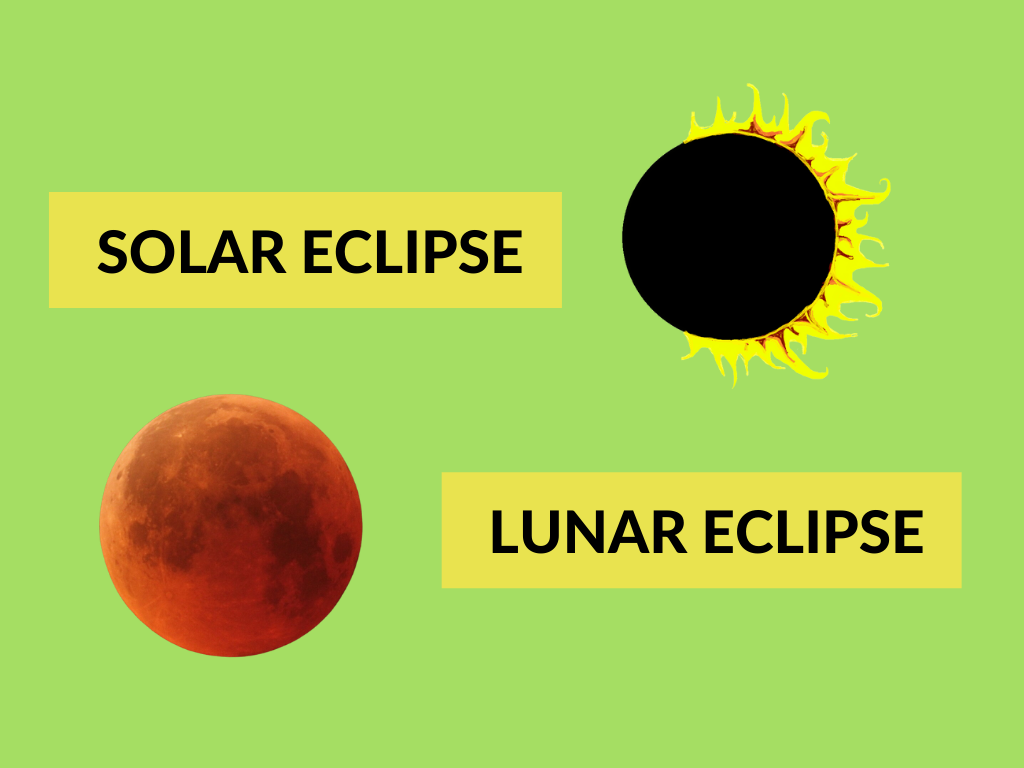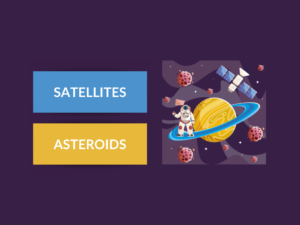A solar eclipse and lunar eclipse involve three celestial bodies: the sun, the moon, and the earth. Solar eclipse and lunar eclipses are natural occurrences in which the sun’s and moon’s lights are partially or completely obscured from view for a brief period of time.
The sun and moon are celestial bodies that provide the majority of natural light to the earth. While the sun is a massive burning star that emits powerful light to illuminate the blue planet, the moon is a satellite that rotates around the earth, reflecting the sun’s light in a milder form on the earth’s surface during the night.
in this article, we will let us know the difference between the Solar eclipse and Lunar eclipse.
Solar eclipse:
A solar eclipse is also known as Surya Grahan. A Solar Eclipse occurs when the Sun, Moon, and Earth are all in alignment and the moon appears between the Earth and the Sun, blocking the sunlight completely or partially.
When the moon completely obscures the sunlight, it is referred to as a total solar eclipse; when it obscures it partially, it is referred to as a partial or annular solar eclipse.
Lunar eclipse:
A lunar eclipse is also known as Chandra Grahan. It is a Lunar Eclipse when the sun, moon, and earth are perfectly aligned and the earth appears between the moon and the sun, casting its shadow on the moon and completely or partially hiding it.
Total lunar eclipses, partial lunar eclipses, and penumbral lunar eclipses are the three types of lunar eclipses. A lunar eclipse is also referred to as a Chandra Grahan. It only happens when the moon is directly opposite the sun and also when the earth is exactly in between them.
Difference between Solar eclipse and Lunar eclipse
| Solar eclipse | Lunar eclipse |
|---|---|
| Meaning | |
| When the moon passes between the earth and the sun, a solar eclipse occurs. | When the earth passes between the moon and the sun, a lunar eclipse occurs. |
| What happens during an eclipse | |
| For a few minutes during a solar eclipse, the moon partially or completely hides the sun's rays. | For a few minutes during a lunar eclipse, the moon is partially or completely hidden by the earth's shadow. |
| Duration of happening | |
| Once in 18 months | 2 times a year |
| Types | |
| Total, partial, and annular solar eclipse | Total, partial, and penumbral lunar eclipse |
| Occurrence | |
| Occurs during a day | Occurs during nights |
| Happens on | |
| New moon day | Full moon day |
| How to see | |
| You need to use protective glasses to avoid harm to the eyes and not be safe to see with naked eyes. | It is perfectly okay to see with naked eyes and no need for protective glasses. |
Bottom line:
As a result of the preceding discussion, Total eclipses are rare because the occurrence of lunar and solar eclipses is dependent on the specific alignment of the Sun, Earth, and Moon in the same plane. Lunar eclipses typically occur twice a year or more, whereas solar eclipses occur three to four times a year.
Further readings:




